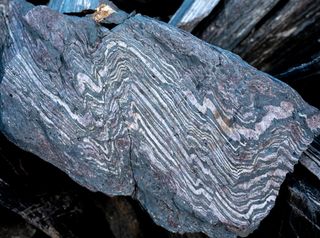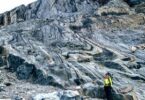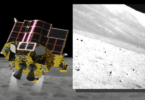A 3.7-billion-year-old record of the gravity of our ancient planet has been unearthed, providing evidence that. Earth’s gravity it has been around for a long time in history. However, this discovery is very surprising.
Rocks approaching 4 billion years old are hard to find; many are now recycled The world a tectonic process, which slides into the mantle in small areas before being pushed back out by volcanic eruptions. Somehow, however, the Isua Supracrustal Belt in Greenland has survived the ravages of time because of its unique geology, resting on a thick continental plate like a lifeboat. in the midst of a sea of tectonic upheaval.
Now, researchers from the University of Oxford and the Massachusetts Institute of Technology have dug up some of those Iua rocks, finding that they contain an ironclad record of Earth’s first gravity. According to this report, our planet’s gravity doesn’t seem to have changed much in the past – but geologists don’t fully understand how Earth would have generated its gravity back then.
Related: Earth was hit by cosmic rays 41,000 years ago due to weak gravity
The existence of gravity is essential for the development of life on Earth, by blocking the harmful layer of energetic particles that are thrown at us by the wind of the day . Therefore, the existence of primordial gravity would have helped life to reach our world.
Previously, estimates and data on the gravity of the early Earth came from crystals of a mineral called zircon found in ancient rocks from Western Australia. These had encouraged the presence of gravity 4.2 billion years ago . However, those results were later questioned as unreliable.
The new results from the rocks in Greenland are considered to be very reliable because, for the first time, they are based on rocks containing iron (rather than individual mineral crystals) to determine the strength of the field the first. Therefore, the sample provides the first reliable measure of not only the strength of the Earth’s surface, but also the time when the gravity began.
One of the 3.7 billion-year-old rocks from Greenland that captured part of the world’s energy. (Image credit: Claire Nichols)
“Extracting reliable records from ancient rocks is very difficult, and it was very exciting to see the original magnetic signatures start to emerge when we analyzed these samples in the laboratory,” said lead researcher Claire Nichols, who who is a professor of planetary geology. Oxford University, yes press release . “This is a really important step as we try to figure out the role of early gravity when life on Earth first appeared.”
The iron particles in Isuru’s rocks can be thought of as tiny magnets, adapting to the Earth’s magnetic field when the rock around them began to glow about 3.7 billion years ago. Therefore, their compatibility has a record of the strength of the field. That energy was measured to be at least 15 microtesla (mT), which is comparable to the field strength of 30 mT today.
However, this still leaves an earlier puzzle: How did the early Earth develop its magnetic field?
Researchers collect samples from the Isua Supracrustal Belt. (Image credit: Claire Nichols)
Today, that field is produced by the dynamo effect generated by electric currents in the Earth’s molten iron core, an effect driven by the force of gravity as the planet’s interior cools and solidifies. However, the interior grew so cool that it began to solidify about a billion years ago; 3.7 billion years ago, it would not have triggered the dynamo effect in the same way that it does today. In short, how the earth’s gravity was generated remains a mystery.
Fortunately, it actually did, and it actually helped ancient microbial life to survive and evolve. The solar wind was stronger in the past than it is today, but over time, Earth’s gravity would have been able to counteract it, creating the conditions for life to continue. outside the seas, where it was protected from danger. rays, and on the earth.
The findings were published on April 24 at Journal of Geophysical Research .






